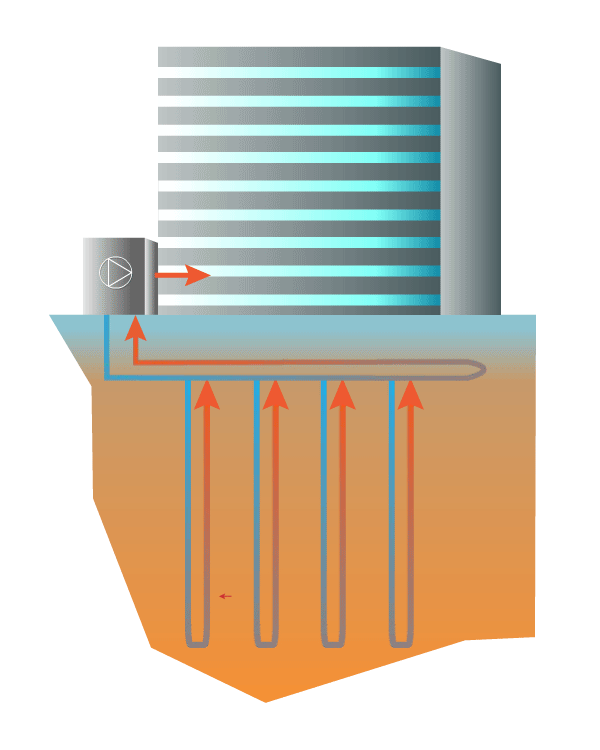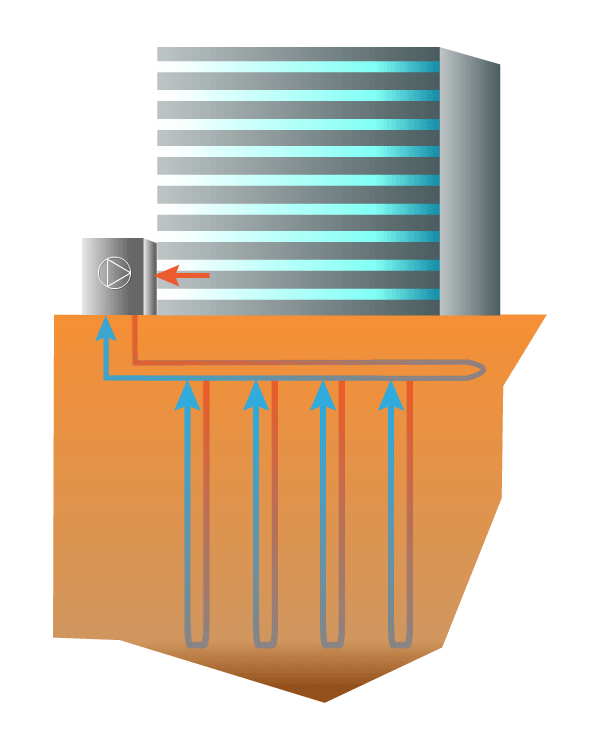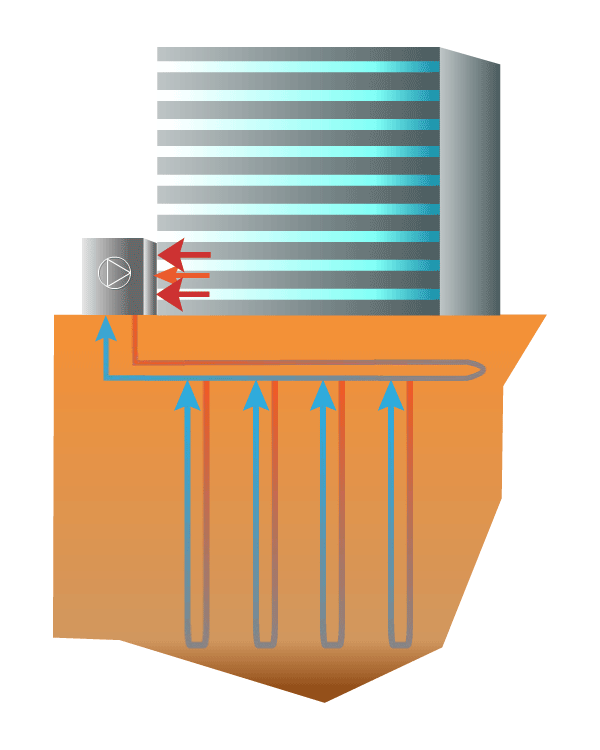How does it work?

Heating and Cooling from the Ground
Ground Source Heat Pumps (GSHPs) are renewable energy systems that use the stable temperature of the ground to provide clean and efficient heating and cooling to a building using minimal amounts of electricity.
In the winter, heat is moved out of the warm ground into the building to get heating.


And this energy is supplied by electricity, not the burning of fuel.

GSHPs can provide 3-6 times the amount of energy that they use.
In the summer, heat is moved out of the warm building into the ground to get cooling.


-
Reduces energy use
Key Benefits
-
Reduces greenhouse gas emissions
-
Reduces operating costs
-
Minimally intrusive design
-
Compatible with existing HVAC equipment
-
Renewable, sustainable, leading edge technology
we're leading the way towards widespread adoption of this highly efficient technology.

These systems are designed to take out only as much energy as they put back over the year.
This balance is what makes geothermal a renewable energy source.
In-ground heat exchangers are specially designed pipes installed to deliver heat between the ground and the heat pump.
Conventional Geothermal
They can be installed horizontally or vertically, and are designed based on soil conditions and building requirements.

Unlike other forms of renewable energy, geothermal systems are buried and minimally invasive to a site.

